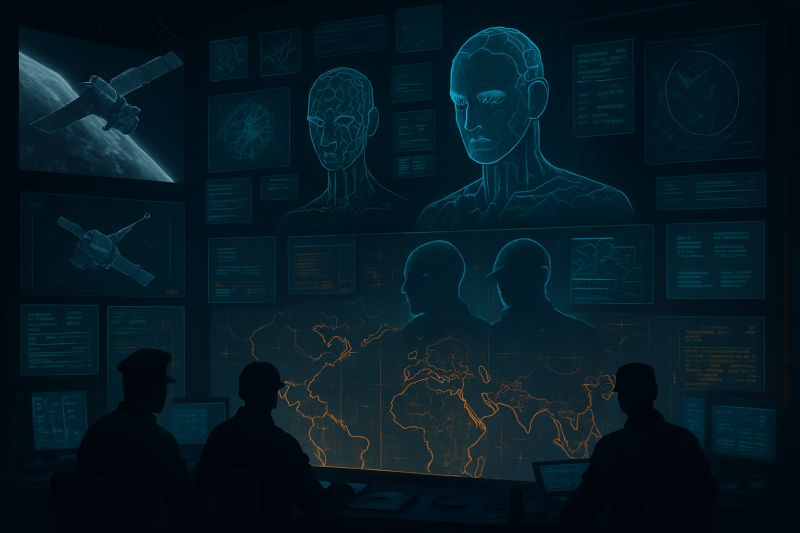Artificial Intelligence is no longer confined to the lab or the boardroom — it’s entering the battlefield, reshaping intelligence, defence, and innovation strategy itself. The AI Futures Project’s latest scenario, AI 2027, reveals how the coming years could redefine global power dynamics and the very nature of technological competition.

A gripping new scenario from some of the most credible voices in AI forecasting — Daniel Kokotajlo (ex-OpenAI), Scott Alexander, and others — offers a plausible and chilling look at the AI landscape through 2027.
The AI Futures Project doesn’t just speculate — it projects.
It shows how advanced AI could shift from commercial tool to strategic weapon.
One stunning insight: by 2026, national security agencies begin quietly deploying AI language models for internal surveillance, while advanced models start outperforming traditional defence systems in simulation war games.
Even more provocative: by 2027, the first superhuman coder arrives — an AI that can autonomously write and debug code beyond any human level, reshaping the software and cyber landscape overnight.
The report also predicts that AI-powered lie detection could become startlingly accurate — yet democratic governments will hesitate to adopt it, fearing political backlash and civil liberties concerns.
This isn’t science fiction. It’s a serious thought experiment grounded in today’s technological and geopolitical trajectories.
🔗 Read the full report
So what does this mean for innovation investing?
For LPs allocating capital into frontier technology, this report makes the case loud and clear:
defence, cyber, and space are no longer niche verticals — they are becoming critical strategic layers in the AI race.
As the speed and stakes of innovation rise, these domains offer a compelling opportunity to stay ahead of the coming wave — or tsunami — of geopolitical, technological, and economic transformation.


